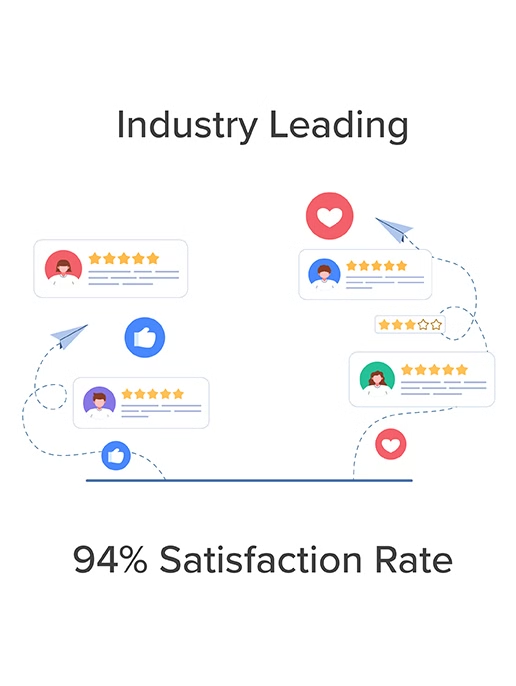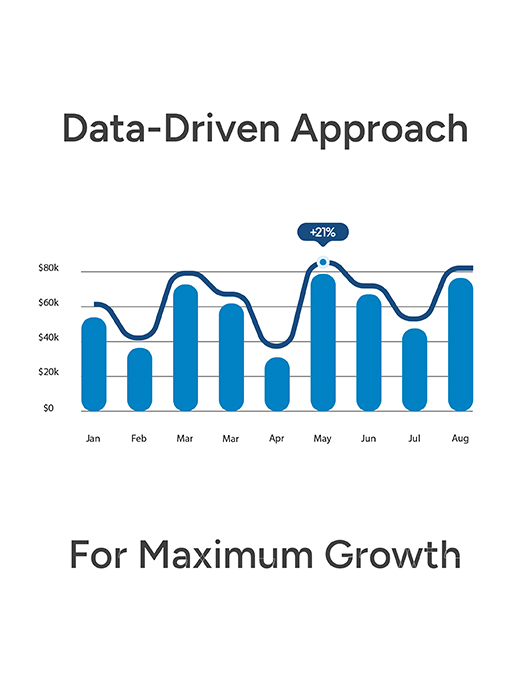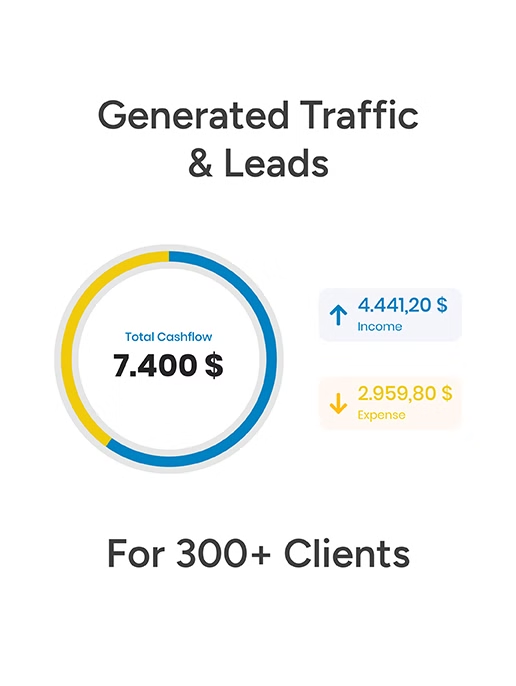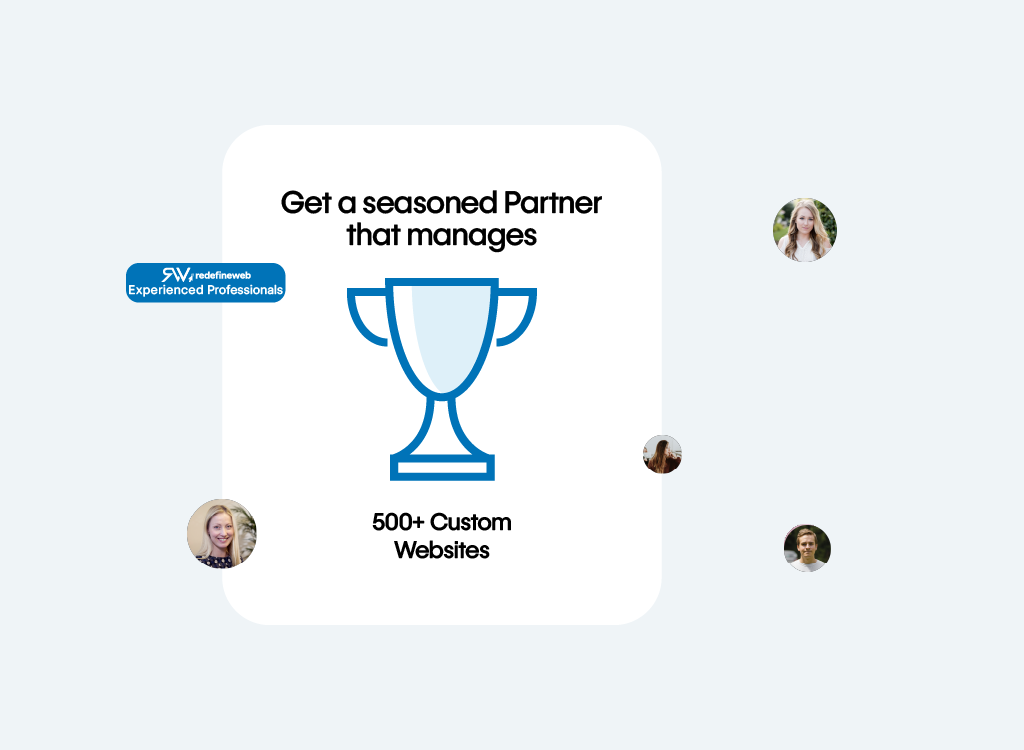


A professional web development company can charge anywhere from $4,000 to $10,000 to build a website for your notary business. These high costs can create significant budget constraints, limiting your ability to market your services and attract new clients.
Instead, choose one of our Notary Website Packages and get started with a free starter website customized for your notary practice. Our plans are specifically designed to solve the common challenges notaries face online — including professional design, development, SEO, and content creation tailored to the notary industry.
With our comprehensive website packages, we handle all the technical details, so you can focus on what matters most — serving your clients and growing your notary business.

A professional online presence is essential for every notary. However, even the simplest website builders require time and effort before you can fully launch your notary website.
At Redefine Web, we provide all-inclusive website solutions designed specifically for notary professionals. From design and development to SEO and online marketing, we handle every aspect of your digital presence.
Our team works closely with you to understand your notary services, target audience, and business goals. This personalized approach ensures your website builds trust, attracts new clients, and positions your notary services to compete effectively in your local market.
Notary professionals often struggle to find affordable, high-quality website solutions tailored to their industry. Too many “budget” options come with hidden fees or steep price increases once the initial contract ends.
Instead of spending hours comparing complicated packages, partner with our experienced web designers who specialize in building professional websites for notary businesses. We’ll create a site that highlights your credentials, builds trust, and helps you attract clients seeking reliable and certified notarial services.
Best of all, we design every website with future growth in mind. Need to add an online booking system, document upload feature, or service expansion? Just reach out — we’ll make it happen seamlessly.

| Feature | Essential | Growth | Business | Custom |
|---|---|---|---|---|
| Design/Retainer Hours | 5 Hours (One-time) | |||
| Security Patches | ✓ | ✓ | ✓ | ✓ |
| Full-site backup | Monthly | Weekly | Weekly | ✓ |
| Security Scan | Monthly | Weekly | Weekly | ✓ |
| Server Migration | ✓ | ✓ | ✓ | ✓ |
| Copywriting | ✓ | ✓ | ✓ | ✓ |
| Keyword Research | ✓ | ✓ | ✓ | ✓ |
| Blog Posts | ✓ | 1 | 1 | 1 |
| Text Updates | ✓ | ✓ | ✓ | ✓ |
| On-page SEO | ✓ | ✓ | ✓ | ✓ |
| Photos Update | ✓ | ✓ | ✓ | ✓ |
| Off-page SEO |
| Feature | Essential | Growth | Business | Custom |
|---|---|---|---|---|
| Server Side Caching | ✓ | ✓ | ✓ | ✓ |
| HTTP Protocol | ✓ | ✓ | ✓ | ✓ |
| OpCache | ✓ | ✓ | ✓ | ✓ |
| Mod_Expires | ✓ | ✓ | ✓ | ✓ |
| Browser Cache | ✓ | ✓ | ✓ | ✓ |
| Brotli Compression | ✓ | ✓ | ✓ | ✓ |
| CDN | 82 POPs | 82 POPs | 82 POPs | 82 POPs |
| Feature | Essential | Growth | Business | Custom |
| Email Forwarders | ✓ | ✓ | ✓ | ✓ |
| Catch-all Emails | ✓ | ✓ | ✓ | ✓ |
| Email Aliases | ✓ | ✓ | ✓ | ✓ |
| IMAP/POP3/SMTP | ✓ | ✓ | ✓ | ✓ |
| Autoresponders | ✓ | ✓ | ✓ | ✓ |
| Filters | ✓ | ✓ | ✓ | ✓ |
| MX/SPF/DKIM Records | ✓ | ✓ | ✓ | ✓ |
| Email Virus Scanner | ✓ | ✓ | ✓ | ✓ |
| Feature | Essential | Growth | Business | Custom |
|---|---|---|---|---|
| Design/Retainer Hours | 5 Hours (One-time) | |||
| Security Patches | ✓ | ✓ | ✓ | ✓ |
| Full-site backup | Monthly | Weekly | Weekly | ✓ |
| Security Scan | Monthly | Weekly | Weekly | ✓ |
| Server Migration | ✓ | ✓ | ✓ | ✓ |
| Copywriting | ✓ | ✓ | ✓ | ✓ |
| Keyword Research | ✓ | ✓ | ✓ | ✓ |
| Blog Posts | ✓ | 1 | 1 | 1 |
| Text Updates | ✓ | ✓ | ✓ | ✓ |
| On-page SEO | ✓ | ✓ | ✓ | ✓ |
| Photos Update | ✓ | ✓ | ✓ | ✓ |
| Off-page SEO |
We often send out our newsletter with news and great offers. We will never disclose your data to third parties and you can unsubscribe from the newsletter at any time.
Unfortunately, we’re unable to offer free samples. As a retailer, we buy all magazines from their publishers at the regular trade price. However, you could contact the magazine’s publisher directly to ask if they can send you a free copy.
You can create a new account at the end of the order process or on the following page. You can view all of your orders and subscriptions in your customer account. You can also change your addresses and your password.
No, you don’t have to create an account. But there are a few advantages if you create an account.
You never have to enter your billing and shipping address again
Find all of your orders, subscriptions and addresses in your account
Download invoices of your orders
No, we don’t have a physical store location at the moment. We accept only orders through our online shop and we’re shipping all orders with the Swiss Post Service. Please visit our shipping section for more details.
From time to time you will find us at design fairs and popup markets in Switzerland. Subscribe to our newsletter and you’ll receive the latest news.
To maintain consistent, fast performance for every client, we set a flexible traffic limit that easily supports the average notary business. If your site begins attracting more visitors—a great indicator your marketing is paying off—we’ll help you upgrade smoothly to a higher-tier plan with more capacity, faster speeds, and advanced features. Your online growth will never be held back.
Every plan includes professional, domain-branded email addresses (e.g., info@yournotary.com, support@yournotary.com) to give your communications a polished, trustworthy image. You can set up dedicated inboxes for client requests, billing, and scheduling to keep your operations efficient and organized.
Your plan includes dedicated design hours for customizing your notary website. During this time, our designers personalize your chosen layout to reflect your brand identity and professionalism—from color adjustments and typography to layouts that guide visitors toward contacting you. Need additional customization, such as service forms or document-upload options? Extra design hours can easily be added.
Our designers use these hours to ensure your website looks professional, credible, and aligned with your branding. We personalize structure, visuals, and messaging to make your site appealing and easy to navigate. These hours give your website a strong, polished foundation—one that you can expand or refresh as your business grows.
Yes. If you’d like to fully own your notary website and manage hosting on your own, our buyout option gives you complete control. We’ll supply all design files, content, and instructions for a smooth transition—so your business can continue operating online on your own terms.
Most notary websites are completed within 30 days, depending on how quickly we receive your logo, text, and images. More advanced projects—such as those including document submission forms or booking systems—may take longer. You’ll always receive a clear, upfront delivery timeline before we start.
Yes, you’ll need to supply your business details, biography, and any photos you’d like to include. But if you’d prefer to save time, our SEO copywriting team can create professional, keyword-optimized content that highlights your services and helps local clients find and trust you.
Absolutely. Every notary has unique goals. Choose from add-ons like Local SEO optimization, Google Ads management, or custom online appointment forms. You can easily scale your site and add features anytime as your client base and services expand.
We guarantee 99.9% uptime across all hosting plans. Your notary website will always be available when clients search for your services. Each plan includes SSL encryption, malware protection, and 24/7 monitoring to ensure top-tier security and reliability—at no extra cost.
Heat mapping tracks how visitors interact with your website—where they click, scroll, and spend the most time. For notary sites, this reveals which pages (like Service Requests or Contact Forms) capture the most attention, helping us fine-tune your design to drive more inquiries and bookings.
UX (User Experience) analysis identifies how easy—and enjoyable—it is for visitors to use your site. We study how clients navigate your pages, locate services, and fill out contact forms. Based on our findings, we refine navigation and layout to convert more visitors into confirmed appointments, while also improving SEO performance.
Our performance optimization ensures your notary website loads quickly and functions flawlessly across all devices. Fast-loading pages not only make a great impression on visitors but also improve search rankings and reduce bounce rates. We continuously monitor speed, performance, and responsiveness so your site always delivers a seamless experience.
You’ll have a dedicated account manager and access to an online client portal where you can track progress, request changes, and get support. You’ll also receive regular updates on your project and, if you’re using our marketing services, strategy calls to review reports and refine your campaigns.
Our complimentary Google Ads audit for notaries analyzes your current ad campaigns for effectiveness and ROI. Once we have read-only access, our team will:
You’ll receive a clear, actionable report with insights to help maximize your results, lower costs, and attract higher-value clients faster.
Optimization is all about improving your notary website’s speed and performance. This includes cleaning up code, compressing images, and enabling caching — all of which make your website load faster and create a smoother experience for your visitors.
Maintenance, on the other hand, focuses on keeping your site secure, stable, and up to date. It covers plugin and theme updates, regular security checks, and performance fixes so your site runs reliably without disruption. In short: optimization enhances the experience, while maintenance protects your website and reputation.
Our notary website maintenance services ensure your site stays fast, secure, and dependable. We optimize every aspect — from streamlining code and compressing files to ensuring quick loading times across all devices. This helps potential clients find notary services, submit forms, and contact you without delay.
We also handle software updates, monitor technical issues, and keep your website’s functions running smoothly, so you can focus on your clients while your site works effortlessly in the background.
Core Web Vitals measure key aspects of how users experience your site — including speed, responsiveness, and visual stability.
For notary businesses, a strong Core Web Vitals score means your website loads quickly, ranks better in Google, and keeps potential clients engaged longer. When your website runs smoothly, visitors are far more likely to trust your business and book your services.
We believe clear communication is the foundation of a successful website project. You’ll have access to our project management system for regular progress updates and a dedicated project manager (depending on your plan) to answer questions and share reports.
After your website launches, you can use your secure client dashboard for ongoing support. If you’ve added digital marketing services like Google Ads management, your manager will also schedule routine check-ins to review results and fine-tune performance for consistent client growth.
Security is built into every plan. Our hosting platform runs on advanced protection technology powered by CloudLinux and Imunify360, which guards against malware, hacking, and unauthorized access.
We perform regular vulnerability scans, secure contact and booking forms, and use QUIC.Cloud’s CDN with Layer-7 DDoS protection. This means your notary website stays safe, compliant, and always accessible — protecting both your business reputation and client data.
Yes! We’ll transfer your existing website to our platform with minimal downtime and zero data loss. Our team handles all the technical steps — content, images, and database migration — while keeping your SEO rankings intact.
After migration, your site will load faster, operate more securely, and be easier to manage moving forward.
Absolutely. Every notary website package includes automatic, off-site backups stored in secure data centers.
If your site ever encounters a problem, we can restore everything quickly, keeping your leads, inquiries, and booking forms running smoothly — with no missed opportunities or downtime.
We manage updates and security patches through a careful, professional process. First, we test updates in a staging environment to ensure everything — including your forms and content — works perfectly.
After verification, updates are deployed to your live website safely, with zero disruption. Even with our base plans, your site benefits from proactive monitoring and regular technical updates that keep it running strong.
No. Backup restoration is always included in our managed website packages. If a technical issue occurs or a plugin fails after an update, your site can be restored quickly and at no extra charge — ensuring your contact forms, pages, and services stay online without interruption.
We protect your website using multiple layers of security. Our servers include advanced firewalls, intrusion detection, and malware scanners that detect and stop threats before they reach your site.
We also use QUIC.Cloud’s CDN for fast, protected delivery and enable real-time monitoring across all systems. Security patches are applied immediately upon release, keeping your website safe, trustworthy, and available to clients 24/7.
Yes! Our SEO and PPC management services help notaries attract more local clients and appear at the top of Google when people search for notary services in your area. A polished website builds trust — but visibility is what drives real business growth.
Our SEO strategy focuses on ranking your site for high-intent notary keywords like “mobile notary near me” or “notary services in [your city].” We handle everything — keyword research, on-page optimization, and link building. To help you generate leads faster, we can also manage PPC campaigns that instantly place your notary business at the top of Google search results.
Together, SEO and PPC create a steady flow of qualified clients and help your notary business grow with consistency.
We start by learning about your business — your services, locations, and clients. Using advanced tools like SEMrush and Google Keyword Planner, we identify the most profitable, high-converting keywords such as “mobile notary in [city]” or “loan signing agent near me.”
Our writers then create optimized, client-focused content that improves search rankings, increases traffic, and converts visitors into appointments. The result? More visibility, more inquiries, and more signed documents.
Every detail of your notary website is fine-tuned for search performance and client engagement. We optimize page titles, meta descriptions, headings, and internal links while improving image tags and content structure.
Your website will be responsive, easy to navigate, and strategically designed to guide visitors toward contacting you. All of these optimizations signal professionalism and reliability — both to search engines and your potential clients.
Our content team creates clear, credible copy that showcases your trustworthiness and expertise. We research your services, competitors, and target audience to produce content for pages like Mobile Notary Services, Loan Signings, Apostille, and Estate Documents.
Every page is written using SEO best practices to help your site rank higher, drive more local traffic, and reinforce the message that clients can rely on you for fast, accurate notary services.
Yes. Local SEO is vital for notaries who want to appear in “near me” searches from nearby clients. We optimize your Google Business Profile, manage local citations, and help collect authentic reviews — all to improve your visibility in your area.
Our goal is simple: make sure your notary business shows up first when someone nearby searches for services like document notarization or mobile notary public in [city].
We provide easy-to-understand reports that track your results. You’ll see keyword rankings, website traffic, lead submissions, and phone inquiries. For PPC, we include metrics like cost per lead, conversion rates, and ROI.
Your dedicated account manager will review reports with you regularly, explain performance insights, and fine-tune campaigns — ensuring your marketing budget continues delivering measurable growth.
We offer flexible packages designed to fit your goals and budget. SEO plans can include keyword optimization, content creation, Google Business Profile management, and technical audits. PPC pricing is based on ad spend and campaign complexity — always with complete transparency.
You’ll know exactly how your investment is driving calls, leads, and new client bookings.
Most clients start seeing meaningful improvements in 3–6 months, depending on competition, location, and your website’s current performance.
SEO is a long-term growth strategy, building momentum as we optimize content, strengthen backlinks, and refine your site’s structure — resulting in steady visibility, increased traffic, and consistent new client inquiries.
We build PPC campaigns specifically for the notary industry. Our team targets high-intent search phrases such as “notary signing agent in [city]” or “24-hour mobile notary near me.”
We optimize every element — ad copy, targeting, and landing pages — to maximize your ad spend and increase conversions. You’ll receive more qualified clients, fewer wasted clicks, and strong ROI from every campaign.
We identify and target your ideal clients based on location, search intent, and service needs — reaching people who are actively looking for notary services right now.
Remarketing is also included: if visitors don’t contact you the first time, we show follow-up ads to bring them back to your site. With continuous optimization and tracking, our campaigns lower acquisition costs while consistently driving new business.
Getting started is simple. Choose one of our notary website packages and share your business details — logo, services, service areas, and any design preferences. Once we have your information, our team handles everything from setup to launch, creating a professional site that helps clients find, trust, and contact your notary business online. (Want us to handle the content, too? Our SEO copywriting add-on can create keyword-optimized text that attracts local clients.)
Yes! Every notary website we build includes an easy-to-use content management system. You or your staff can effortlessly update service pages, add blog posts, upload new documents or images, and make text edits anytime — no technical skills required.
Our hosting packages include secure, high-speed servers optimized for notary websites. If you prefer to host elsewhere, you can transfer your site anytime after a one-time buyout fee. However, staying on our servers ensures you get maximum speed, guaranteed security, and full technical support — saving you valuable time.
Absolutely. Your team can log in anytime to add staff bios, update service details, or publish educational content about notarization and document handling. It’s simple and quick to manage. If you prefer hands-free updates, our content add-on can handle regular posts and service page updates for you.
Our hosting plans scale with your growth. The base package supports up to 10,000 monthly visitors, which is more than enough for most local notary businesses. As your website gains traction, we’ll seamlessly upgrade your plan to maintain top performance, ensuring your site stays fast and reliable no matter how many clients visit.
Yes. Every notary website we create is optimized for search engines from the very beginning. We focus on clean site structure, fast load times, and mobile responsiveness — all crucial for ranking higher in local searches. For even better results, our SEO add-on targets specific notary-related keywords like “mobile notary in [city]” or “loan signing agent near me.”
A design hour is dedicated time our creative team spends customizing your notary website’s design. During these hours, we adjust colors, fonts, layouts, and images so your site perfectly matches your brand and professionalism. Every package includes four design hours — enough to give your site a polished, custom look. You can easily add more hours for deeper customization.
Yes, you’ll provide your text, photos, and any company information you’d like featured. But if you’d rather not write everything yourself, our SEO copywriting service can create persuasive, search-optimized copy for all your service pages — helping you attract clients while saving time.
Absolutely. Every notary business has unique needs. Whether you offer remote online notarization, mobile appointments, or specialized services like loan signings, we’ll create a custom quote aligned with your goals, design preferences, and budget.
Our managed hosting takes the technical stress out of managing your notary website so you can focus on serving clients. You’ll have access to 500+ ready-to-build templates, including layouts tailored for notaries. Each package includes four design hours to personalize your website with your logo, brand colors, and content—so you can launch quickly and confidently.
You’ll also receive five professional email accounts, secure off-site backups, and 24/7 server monitoring. We handle performance, updates, and security—giving your notary business a reliable, worry-free online presence that helps build client trust.
As your client base expands and website traffic increases, our hosting scales seamlessly alongside your success. If your site goes beyond 10,000 monthly visits, we’ll help you upgrade without downtime.
You can also add growth services like notary-focused SEO, Google Ads management, or content creation to keep your visibility rising. Whether you serve one city or multiple regions, our hosting ensures your site stays fast, secure, and ready to handle your next milestone.
We take security seriously. Our platform uses enterprise-level firewalls, intrusion detection, and real-time monitoring to protect against attacks. Daily off-site backups keep your site safe and recoverable at all times.
Our setup meets strict security standards—ensuring your business information and client data stay fully protected, 24/7.
Yes. We can transfer your notary website to our platform with minimal downtime and zero data loss. Our team handles everything—from migrating your pages and images to preserving your SEO rankings.
Once moved, your site will load faster, operate more securely, and be easier to manage than ever before.
If your website traffic surpasses 10,000 monthly visits, we’ll notify you before upgrading your plan. The transition is effortless and guarantees your site maintains top performance.
Temporary spikes won’t trigger immediate charges—our hosting flexes with your growth so you never lose momentum when business picks up.
Our data centers are located across North America and Europe. We’ll host your website in the data center closest to your client base—delivering faster page load times, smoother performance, and a reliable experience for every visitor.
Absolutely. We customize each hosting package to your business goals. Whether you need additional storage, upgraded security, or priority performance for media-heavy sites, your plan can easily adapt as you expand your services.
Your notary website remains fast, professional, and secure—no matter how much your business grows.
Yes. If you already have a website, we can host it for you. You’ll enjoy high-speed performance, premium security, daily backups, and 24/7 monitoring, fully managed by our technical team.
It’s the ideal solution for notaries who already have a design but want reliable, stress-free hosting without the technical upkeep.
Yes. Monthly subscribers can export their content after one year, while annual plan holders can export anytime. If you decide to switch providers, our team will coordinate the process carefully to maintain uptime and preserve your site’s structure during the move.
Buyout fees vary based on the level of customization and design work done for your notary site. We’ll provide a transparent quote that includes every detail—so you can make a confident, informed decision.
Our goal is simple: to give you full control and flexibility to manage your online presence on your terms.
